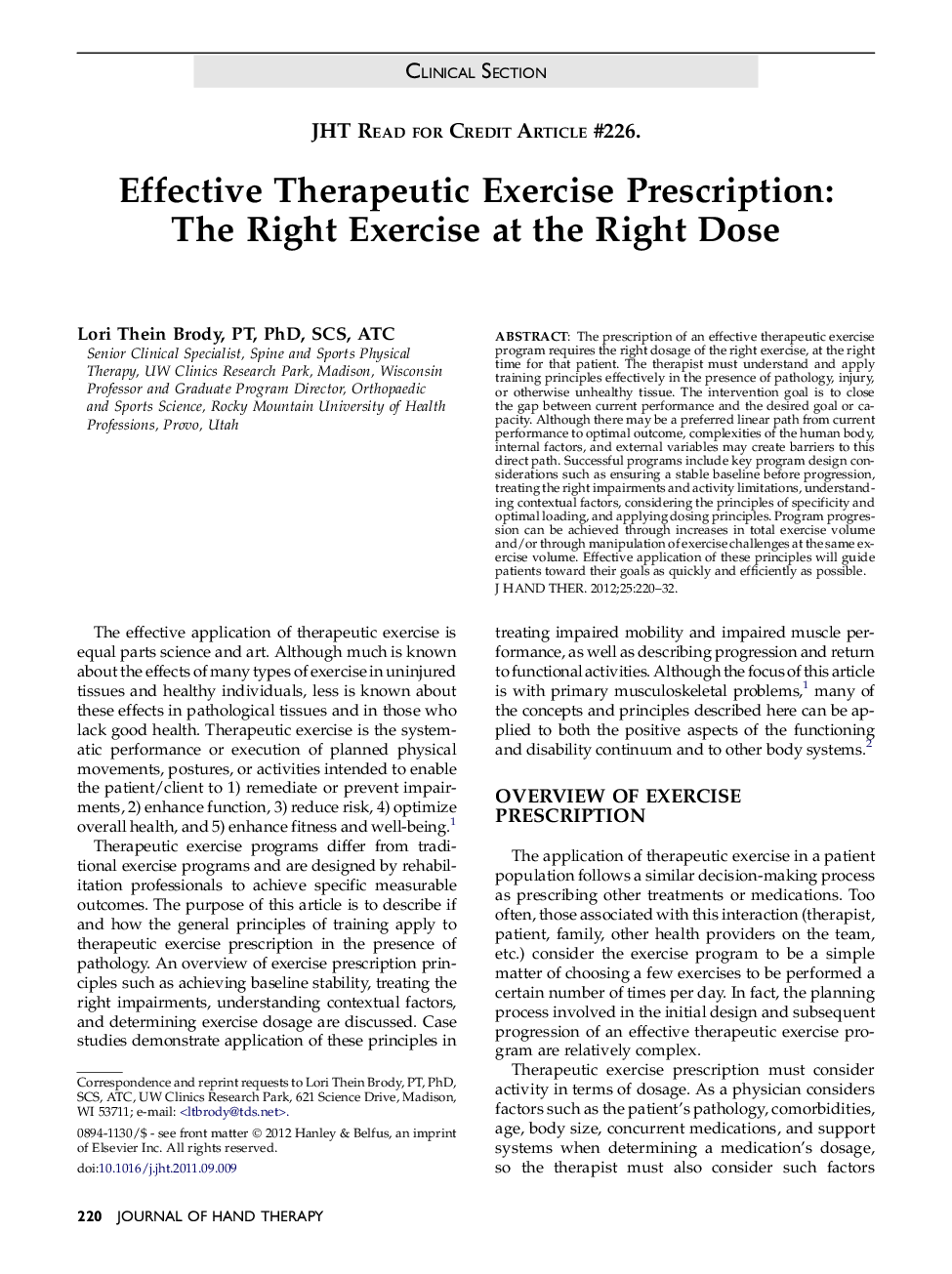| Article ID | Journal | Published Year | Pages | File Type |
|---|---|---|---|---|
| 2694958 | Journal of Hand Therapy | 2012 | 13 Pages |
The prescription of an effective therapeutic exercise program requires the right dosage of the right exercise, at the right time for that patient. The therapist must understand and apply training principles effectively in the presence of pathology, injury, or otherwise unhealthy tissue. The intervention goal is to close the gap between current performance and the desired goal or capacity. Although there may be a preferred linear path from current performance to optimal outcome, complexities of the human body, internal factors, and external variables may create barriers to this direct path. Successful programs include key program design considerations such as ensuring a stable baseline before progression, treating the right impairments and activity limitations, understanding contextual factors, considering the principles of specificity and optimal loading, and applying dosing principles. Program progression can be achieved through increases in total exercise volume and/or through manipulation of exercise challenges at the same exercise volume. Effective application of these principles will guide patients toward their goals as quickly and efficiently as possible.
